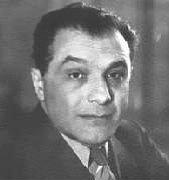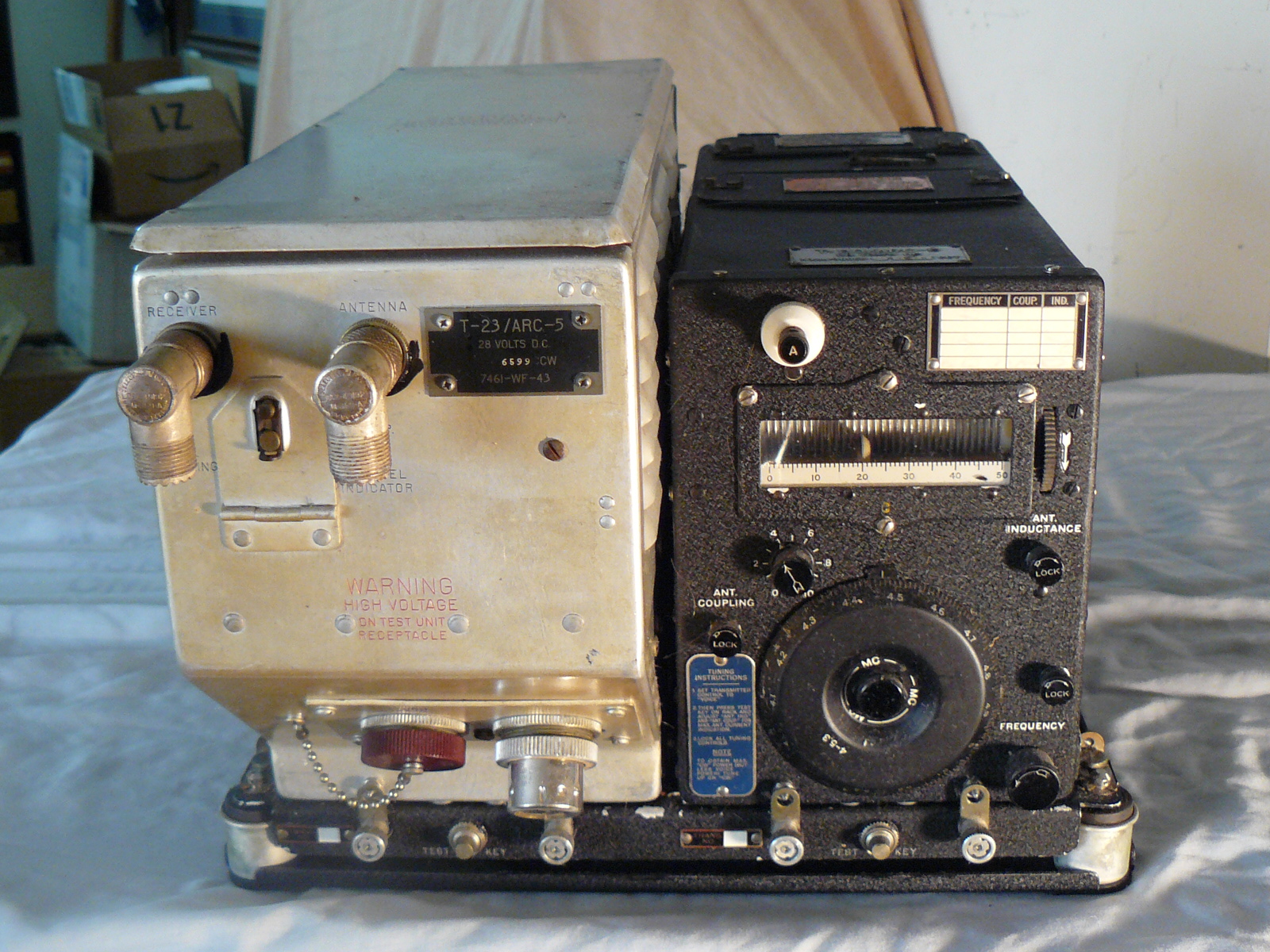|
P-47N
The P-47 Thunderbolt was a World War II fighter aircraft built by Republic Aviation from 1941 to 1945. Early designs XP-47 (AP-10) In response to a USAAC requirement for a new fighter aircraft, Republic Aviation engineer Alexander Kartveli proposed the AP-10 lightweight high-altitude interceptor on August 1, 1939. As originally proposed, the AP-10 was to have been powered by a 1,150 hp Allison V-1710-39 12-cylinder inline engine and have an armament consisting of two nose-mounted .50 in (12.7 mm) M2 Browning machine guns. Maximum speed was estimated to be 415 mph, while gross weight was to be 4,900 lb. The USAAC was impressed by the AP-10 proposal, but expressed concerns that it would be underarmed. Kartveli revised the AP-10 by slightly increasing its size and mounting two .30 in (7.62 mm) M1919 Browning machine guns in each wing, raising the gross weight to 6,570 lb. Satisfied, the USAAC ordered a single prototype under the designation XP-47, in ... [...More Info...] [...Related Items...] OR: [Wikipedia] [Google] [Baidu] |
Republic Aviation
The Republic Aviation Corporation was an American aircraft manufacturer based in Farmingdale, New York, on Long Island, New York, Long Island. Originally known as the Seversky Aircraft Company, the company was responsible for the design and production of many important military aircraft, including its most famous products: World War II's Republic P-47 Thunderbolt, P-47 Thunderbolt fighter, the Republic F-84 Thunderjet, F-84 Thunderjet and Republic F-105 Thunderchief, F-105 Thunderchief jet fighters, as well as the Fairchild Republic A-10 Thunderbolt II, A-10 Thunderbolt II close-support aircraft. History Seversky Aircraft The Seversky Aircraft Company was founded in 1931 by Alexander de Seversky, a Russians, Russian expatriate and veteran World War I Aviator, pilot who had lost a leg in the war. In the beginning, many of Seversky Aircraft's designers were Russian and Georgians, Georgian engineers, including Michael Gregor (aircraft engineer), Michael Gregor and Alexander Kartveli, ... [...More Info...] [...Related Items...] OR: [Wikipedia] [Google] [Baidu] |
Alexander Kartveli
Alexander Kartveli, born Aleksandre Kartvelishvili, ( ka, ალექსანდრე ქართველიშვილი) (September 9, 1896 – July 20, 1974) was a Georgian aeronautical engineer and an aviation pioneer in the United States. Kartveli achieved important breakthroughs in military aviation in the time of turbojet fighters. (June 30, 2002). Retrieved on October 17, 2011. Education and early career Alexander Kartvelishvili was born in Tbilisi, Georgia, which was part of Russian Empire at that time; into a noble Georgian family. (Georgians call themselves "kartvelebi", and his surname derives from "Kartveli", or Georgian). He graduated from the grammar school in Tbilisi in 1914. Later on, he decided to move to France, as one of several aviation engineer aspirants of Georgian origin, such as Michael Gregor. Kartvelishvili graduated in 1922 from the Institut supérieur de l'aéronautique et de l'espace in Paris.. He began working as a test pilot but was seri ... [...More Info...] [...Related Items...] OR: [Wikipedia] [Google] [Baidu] |
Republic P-47 Thunderbolt
The Republic P-47 Thunderbolt is a World War II-era fighter aircraft produced by the American company Republic Aviation from 1941 through 1945. It was a successful high-altitude fighter and it also served as the foremost American fighter-bomber in the ground-attack role. Its primary armament was eight .50-caliber machine guns, and it could carry 5-inch rockets or a bomb load of . When fully loaded, the P-47 weighed up to 8 tons, making it one of the heaviest fighters of the war. The Thunderbolt was effective as a short-to medium-range escort fighter in high-altitude air-to-air combat and ground attack in both the European and Pacific theaters. The P-47 was designed around the powerful Pratt & Whitney R-2800 Double Wasp 18-cylinder radial engine, which also powered two U.S. Navy/U.S. Marine Corps fighters, the Grumman F6F Hellcat and the Vought F4U Corsair. An advanced turbosupercharger system ensured the aircraft's eventual dominance at high altitudes, while also influencing ... [...More Info...] [...Related Items...] OR: [Wikipedia] [Google] [Baidu] |
AN/ARC-5
The AN/ARC-5 Command Radio Set is a series of radio receivers, transmitters, and accessories carried aboard U.S. Navy aircraft during World War II and for some years afterward. It is described as "a complete multi-channel radio transmitting and receiving set providing communication and navigation facilities for aircraft. The LF-MF-HF components are designed to transmit and receive voice, tone-modulated, and continuous wave (cw) signals." Its flexible design provided AM radiotelephone voice communication and Modulated continuous wave (MCW) and Continuous wave (CW) Morse code modes, all of which are typical capabilities in other Navy aircraft communication sets of the period. It was an improvement of the Navy's ARA/ATA command set. Similar units designated SCR-274-N were used in U.S. Army aircraft. The Army set is based on the ARA/ATA, not the later AN/ARC-5. The ARA/ATA and SCR-274-N series are informally referred to as "ARC-5", despite small differences that render all three ser ... [...More Info...] [...Related Items...] OR: [Wikipedia] [Google] [Baidu] |
Republic P-47C-2-RE 061020-F-1234P-019
A republic () is a " state in which power rests with the people or their representatives; specifically a state without a monarchy" and also a " government, or system of government, of such a state." Previously, especially in the 17th and 18th centuries, the term was used to imply a state with a democratic or representative constitution (constitutional republic), but more recently it has also been used of autocratic or dictatorial states not ruled by a monarch. It is now chiefly used to denote any non-monarchical state headed by an elected or appointed president. , 159 of the world's 206 sovereign states use the word "republic" as part of their official names. Not all of these are republics in the sense of having elected governments, nor is the word "republic" used in the names of all states with elected governments. The word ''republic'' comes from the Latin term ''res publica'', which literally means "public thing", "public matter", or "public affair" and was used to ref ... [...More Info...] [...Related Items...] OR: [Wikipedia] [Google] [Baidu] |
Laminar Flow
In fluid dynamics, laminar flow is characterized by fluid particles following smooth paths in layers, with each layer moving smoothly past the adjacent layers with little or no mixing. At low velocities, the fluid tends to flow without lateral mixing, and adjacent layers slide past one another like playing cards. There are no cross-currents perpendicular to the direction of flow, nor eddies or swirls of fluids. In laminar flow, the motion of the particles of the fluid is very orderly with particles close to a solid surface moving in straight lines parallel to that surface. Laminar flow is a flow regime characterized by high momentum diffusion and low momentum convection. When a fluid is flowing through a closed channel such as a pipe or between two flat plates, either of two types of flow may occur depending on the velocity and viscosity of the fluid: laminar flow or turbulent flow. Laminar flow occurs at lower velocities, below a threshold at which the flow becomes turbulent. Th ... [...More Info...] [...Related Items...] OR: [Wikipedia] [Google] [Baidu] |
Republic XP-47E 061020-F-1234P-024
A republic () is a "state in which power rests with the people or their representatives; specifically a state without a monarchy" and also a "government, or system of government, of such a state." Previously, especially in the 17th and 18th centuries, the term was used to imply a state with a democratic or representative constitution (constitutional republic), but more recently it has also been used of autocratic or dictatorial states not ruled by a monarch. It is now chiefly used to denote any non-monarchical state headed by an elected or appointed president. , 159 of the world's 206 sovereign states use the word "republic" as part of their official names. Not all of these are republics in the sense of having elected governments, nor is the word "republic" used in the names of all states with elected governments. The word ''republic'' comes from the Latin term ''res publica'', which literally means "public thing", "public matter", or "public affair" and was used to refer ... [...More Info...] [...Related Items...] OR: [Wikipedia] [Google] [Baidu] |
Intercooler
An intercooler is a heat exchanger used to cool a gas after compression. Often found in turbocharged engines, intercoolers are also used in air compressors, air conditioners, refrigeration and gas turbines. Internal combustion engines Most commonly used with turbocharged engines, an intercooler is used to counteract the heat of compression and heat soak in the pressurised intake air. By reducing the temperature of the intake air, the air becomes denser (allowing more fuel to be injected, resulting in increased power) and less likely to suffer from pre-ignition or knocking. Additional cooling can be provided by externally spraying a fine mist onto the intercooler surface, or even into the intake air itself, to further reduce intake charge temperature through evaporative cooling. Intercoolers can vary dramatically in size, shape and design, depending on the performance and space requirements of the system. Many passenger cars use either ''front-mounted intercoolers'' l ... [...More Info...] [...Related Items...] OR: [Wikipedia] [Google] [Baidu] |
Reconnaissance
In military operations, reconnaissance or scouting is the exploration of an area by military forces to obtain information about enemy forces, terrain, and other activities. Examples of reconnaissance include patrolling by troops (skirmishers, long-range reconnaissance patrol, U.S. Army Rangers, cavalry scouts, or military intelligence specialists), ships or submarines, crewed or uncrewed reconnaissance aircraft, satellites, or by setting up observation posts. Espionage is usually considered to be different from reconnaissance, as it is performed by non-uniformed personnel operating behind enemy lines. Often called recce (British, Canadian and Australian English) or recon (American English), the word for this activity has at its root the associated verb ''reconnoitre'' or ''reconnoiter''. Etymology The word from the Middle French ''reconoissance''. Overview Reconnaissance conducted by ground forces includes special reconnaissance, armored reconnaissance, amp ... [...More Info...] [...Related Items...] OR: [Wikipedia] [Google] [Baidu] |
Elevator (aeronautics)
Elevators are flight control surfaces, usually at the rear of an aircraft, which control the aircraft's pitch, and therefore the angle of attack and the lift of the wing. The elevators are usually hinged to the tailplane or horizontal stabilizer. They may be the only pitch control surface present, and are sometimes located at the front of the aircraft (early airplanes) or integrated into a rear "all-moving tailplane", also called a slab elevator or stabilator. Elevator control effectiveness The elevator is a usable up and down system that controls the plane, horizontal stabilizer usually creates a ''downward'' force which balances the nose down moment created by the wing lift force, which typically applies at a point (the wing center of lift) situated aft of the airplane's center of gravity. The effects of drag and changing the engine thrust may also result in pitch moments that need to be compensated with the horizontal stabilizer. Both the horizontal stabilizer and ... [...More Info...] [...Related Items...] OR: [Wikipedia] [Google] [Baidu] |
Aileron
An aileron (French for "little wing" or "fin") is a hinged flight control surface usually forming part of the trailing edge of each wing of a fixed-wing aircraft. Ailerons are used in pairs to control the aircraft in roll (or movement around the aircraft's longitudinal axis), which normally results in a change in flight path due to the tilting of the lift vector. Movement around this axis is called 'rolling' or 'banking'. Considerable controversy exists over credit for the invention of the aileron. The Wright brothers and Glenn Curtiss fought a years-long legal battle over the Wright patent of 1906, which described a method of wing-warping to achieve lateral control. The brothers prevailed in several court decisions which found that Curtiss's use of ailerons violated the Wright patent. Ultimately, the First World War compelled the U.S. Government to legislate a legal resolution. A much earlier aileron concept was patented in 1868 by British scientist Matthew Piers Watt Bou ... [...More Info...] [...Related Items...] OR: [Wikipedia] [Google] [Baidu] |





.png)



.png)